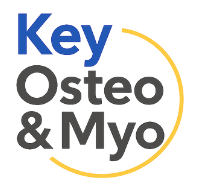Understanding What People Mean by “Toxins”
Myths and Misunderstandings About Detox and Osteopathy
Many people come across the idea that osteopathic treatment can “release toxins” from the body. The phrase often appears online or is passed on by word of mouth after someone feels tired, light-headed, or even emotional following treatment. While these reactions are genuine experiences for some patients, the concept of “toxins being released” does not accurately describe what happens within the body during or after osteopathic care.
The Body’s Natural Cleansing Systems: Liver, Kidneys, and Lymphatics
Why Patients Sometimes Feel Different After Treatment
If you’re unsure about how osteopathy affects the body or have questions about concepts like “toxin release,” our osteopaths at Key Osteopaths are here to provide clear, evidence-based guidance. We support patients across West Byfleet, Woking, Weybridge, Guildford, Ripley, Cobham, and the surrounding Surrey areas, helping you understand what treatment can and cannot do. Our approach focuses on improving movement, easing mechanical strain, and supporting the body’s natural recovery processes so you can feel more comfortable, informed, and confident in your care.Anna, Principal Osteopath at Key Osteopaths
How Osteopathic Treatment Affects the Body

Circulation, Lymphatic Flow, and Tissue Health
The Role of the Nervous System and Muscle Tone Regulation
Why Post-Treatment Fatigue or Soreness May Occur
The Science Behind “Toxin Release” Sensations

Metabolic Byproducts and Inflammatory Mediators
What Research Says About Osteopathy and Detoxification
Safe and Expected Physiological Responses After Treatment

MEET THE
team
I have been treated by Anna for a few years now to address niggles received from training and love that she not only addresses the immediate problem, but works to… read more help correct some the underlying issues too. Very knowledgeable and professional.
I can not recommend Anna more…..she has totally helped me sort my lower back after a slipped disc. I now see her regularly just to prevent any further issues with… read more my back. She has worked magic! I have recommended her to many friends and family who have equally been really pleased with her.
I was seen by Anna initially because I had hurt my neck so badly that I was unable to pick up my baby from the floor. In tears on the… read more phone she managed to get me an appointment that day, and she worked her magic, I could move my neck on the way out and the next day the pain had gone. Since then I have seen her regularly (my choice) as she is so fantastic. Very professional, gentle and lovely. Thank you so much!
Supporting Your Recovery After an Osteopathic Session

Hydration, Rest, and Gentle Movement
When to Contact Your Osteopath or GP
Self-Care Tips for Patients in West Byfleet, Woking, and Weybridge
The Role of the Lymphatic and Circulatory Systems in Healing

How Osteopaths Encourage Efficient Fluid Exchange
Techniques That Support Natural Clearance of Waste Products
Local Patient Experiences from Guildford, Ripley, and Cobham
I have been seeing Francesca for a few years now, initially for severe back pain which she was able to identify the source of and alleviate really quickly. Now… read more I see her on a fairly regular basis (my choice), so that she can make sure problems aren’t reoccurring and also deal with any new aches and pains I inevitably pick up along the way. I feel she has an intuitive instinct backed by her advanced qualifications and regularly recommend her to others.
Anna is brilliant – she really listens and then treats any issue so well I walk out feeling completely different. She thinks about things between visits so always moves things… read more forward and has different sets of exercises to perfect after each visit, which I love. This speeds recovery and aids long term maintenance. Anna always goes the extra mile after each appointment, she’s a life saver. Needless to say she’s v popular but I’ve always managed to get to see her when I need to, she tries to giggle things to fit people in. Her lovely practise has such a calm air about it, lovely lighting feels so relaxing. Thank you Anna for fixing me!
Clinical Reasoning and Safety in Osteopathic Practice

How Osteopaths Assess Before Treating
Recognising Red Flags and When to Refer On
Collaborative Care with GPs and Specialists Across Dorking and Chertsey
Setting Realistic Expectations for Your Treatment

What Improvement Looks Like Over Time
Article Writer EEAT Standard said:
Understanding Your Body’s Adaptation Process
How Our Team at Key Osteopaths Guides Recovery in Wisley, Sheerwater, and East Horsley
Anna is absolutely incredible and I cannot recommend her high enough! I have been seeing Anna for 2 years and she has changed my life. I had spent… read more the previous 5 years to this with serious back pain due to disc degeneration. During this time I had been given both steroid injections and a nerve denervation to ease the pain (along with many painkillers). Since seeing Anna I have not needed anything. She works her magic and then gives you simple exercises until your next appointment. She has also advised on my posture, driving and sleep position and everything she has advised has worked. I don’t need to see her so regularly anymore, but she is now helping my daughter who suffers ankle problems. A very talented lady, who is also excellent with children. Go see her !
Book an Appointment at Key Osteopaths


